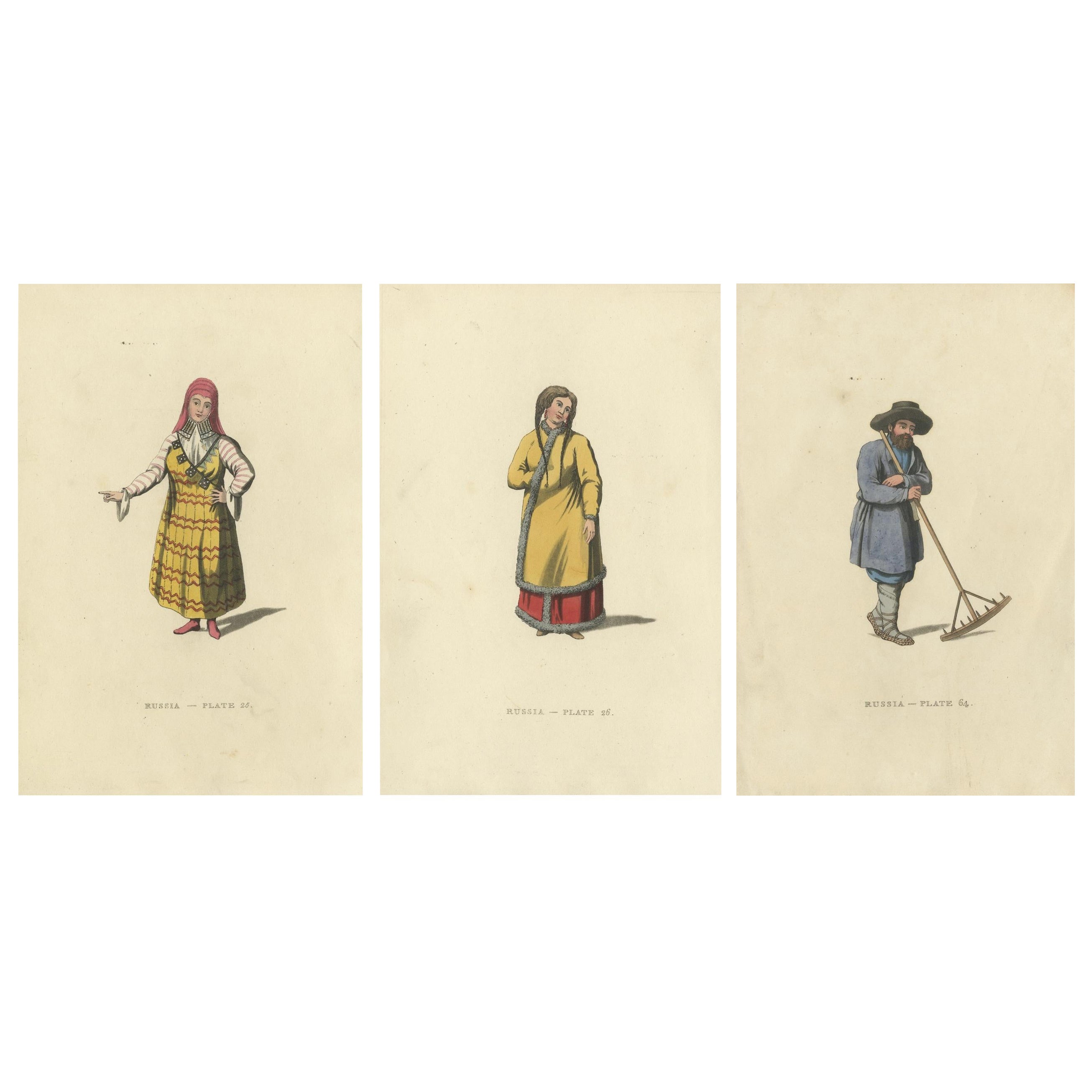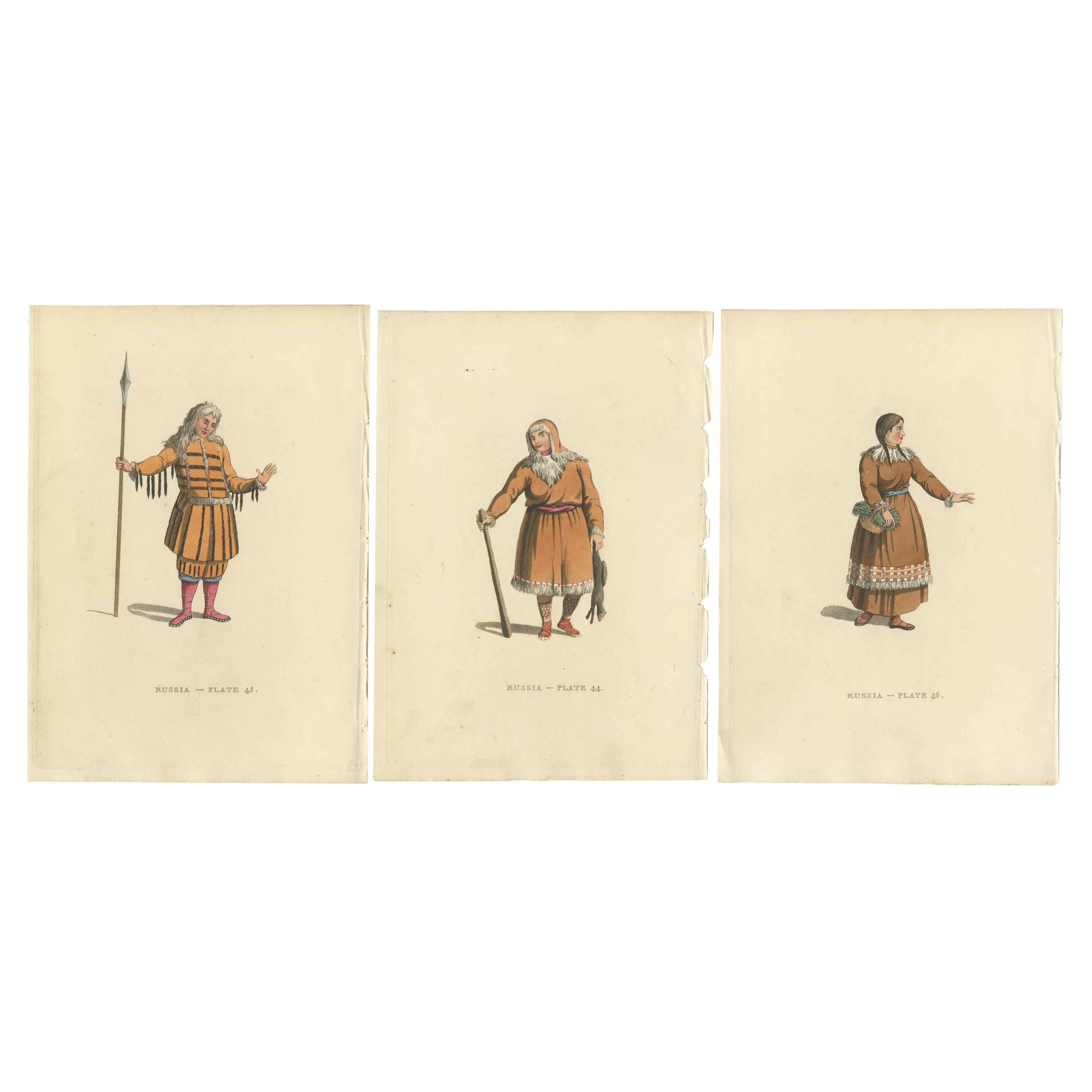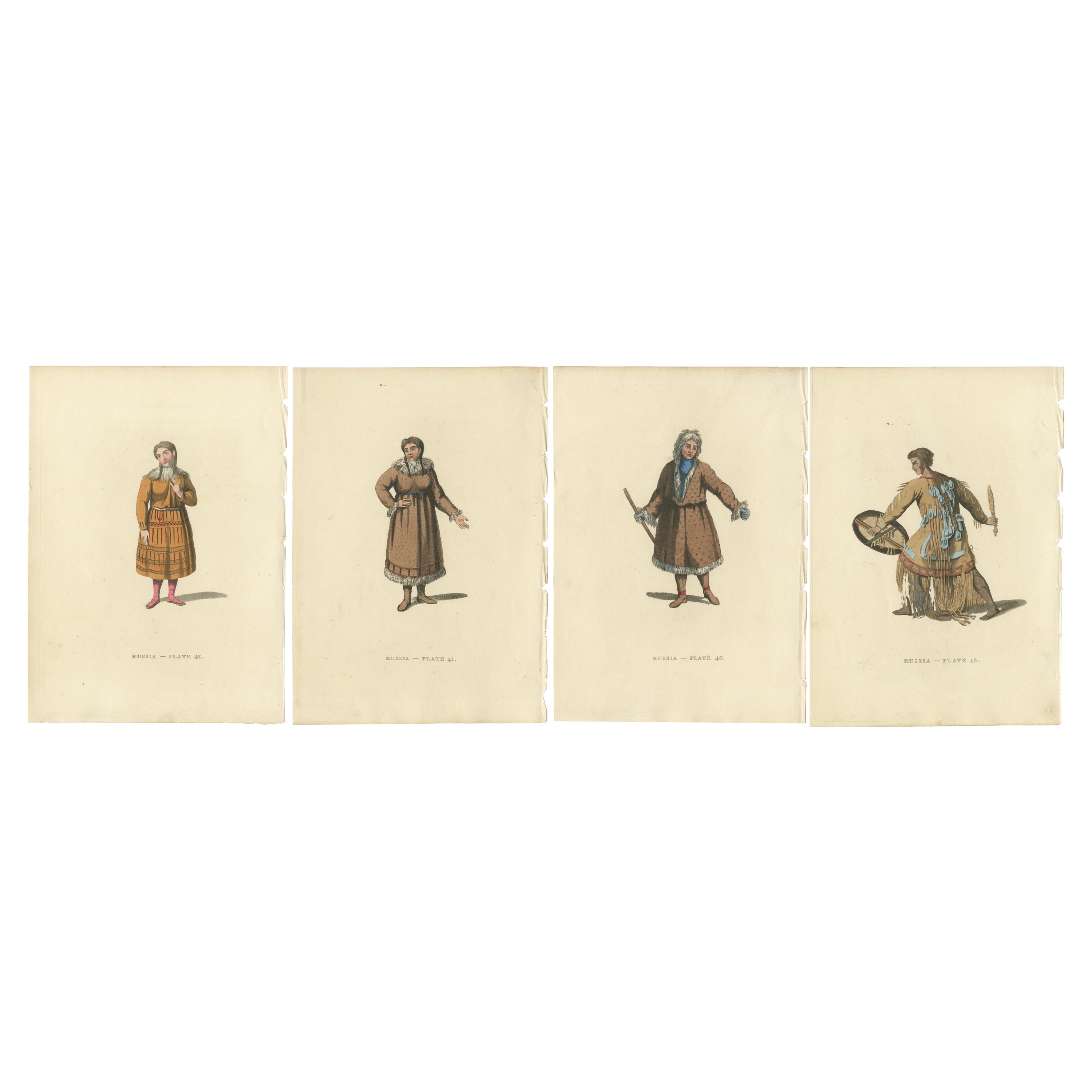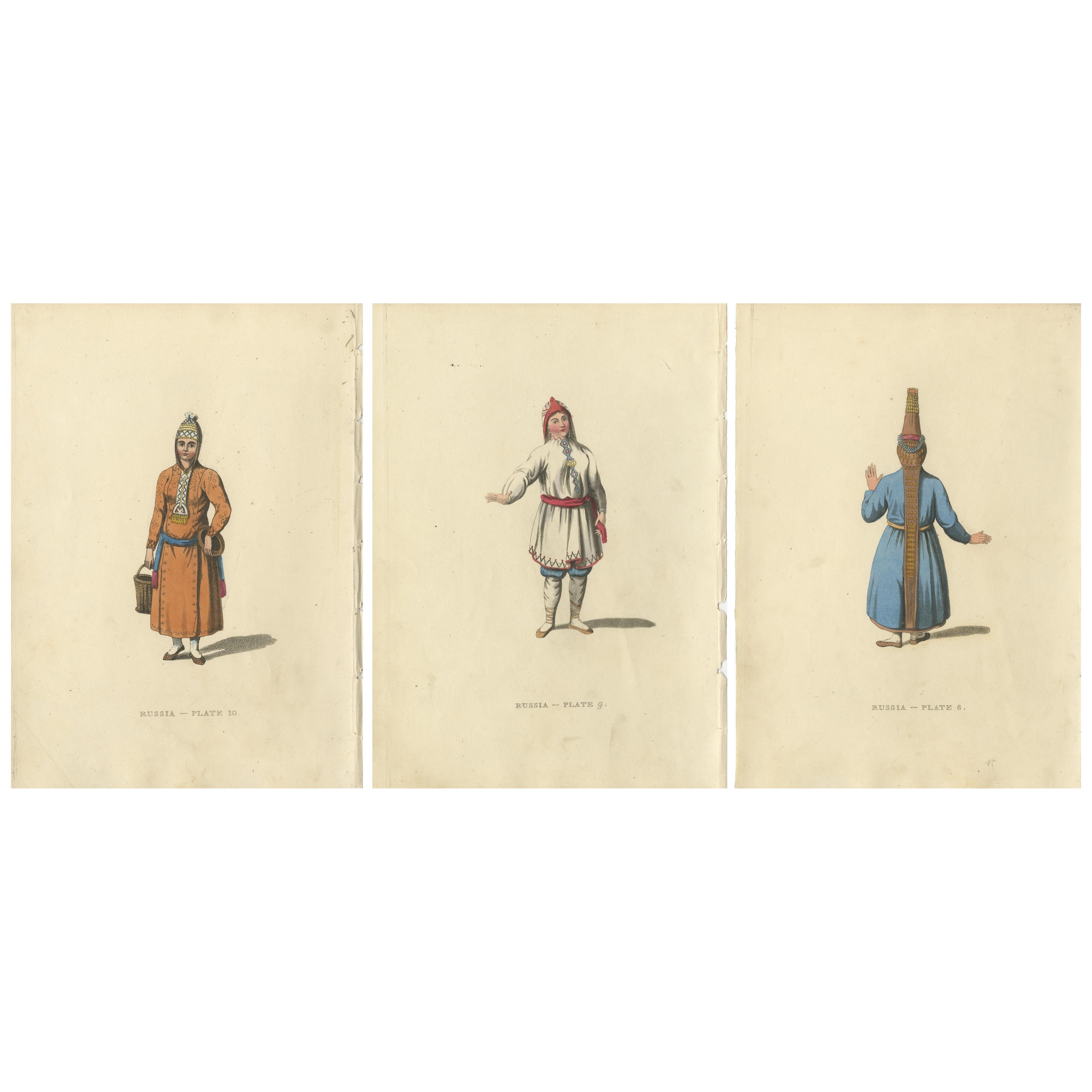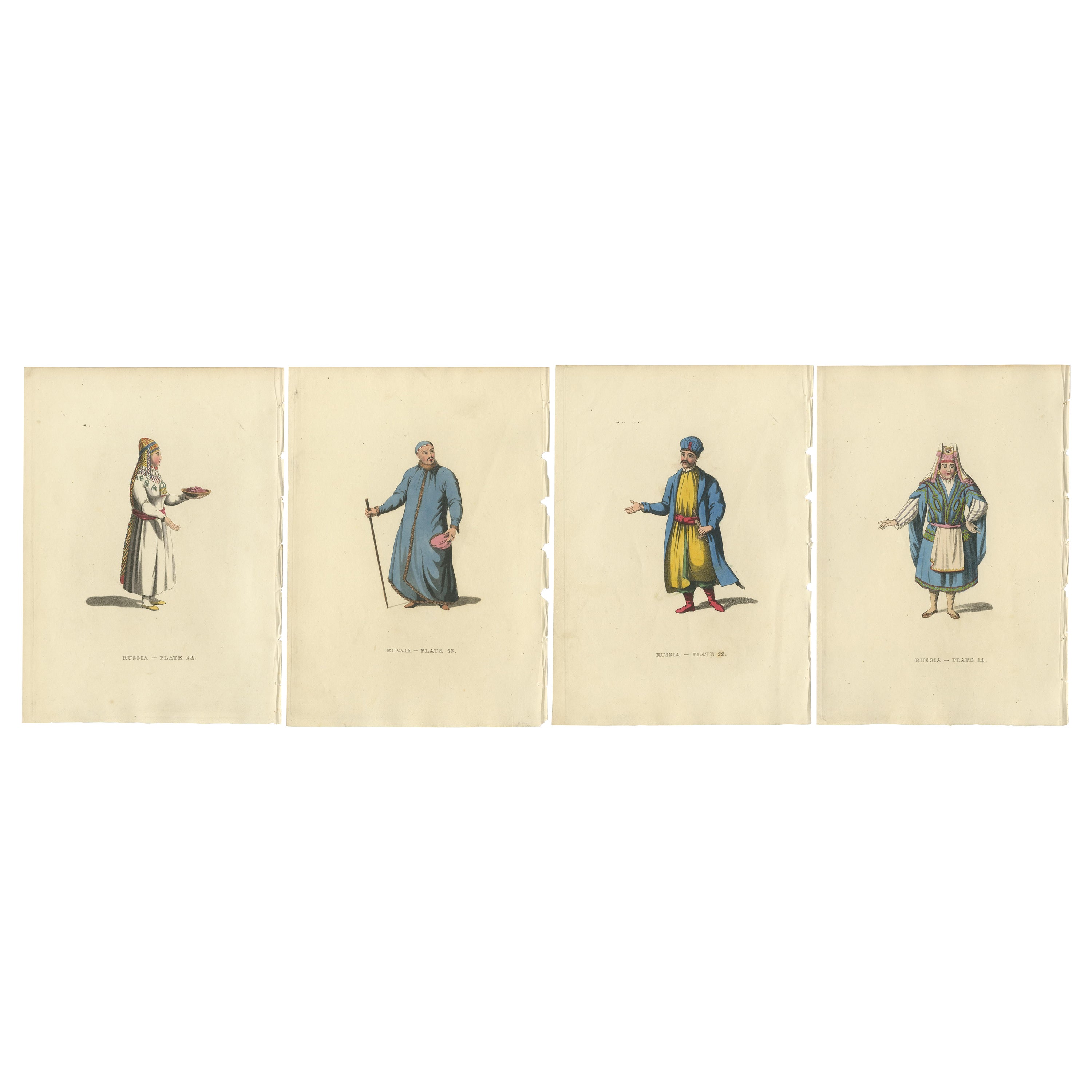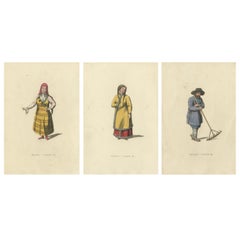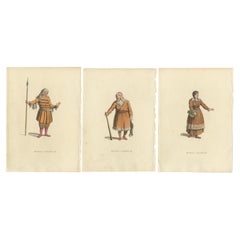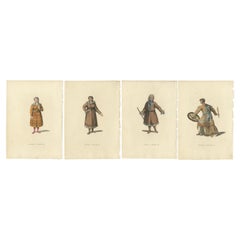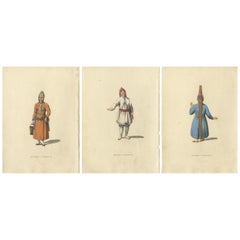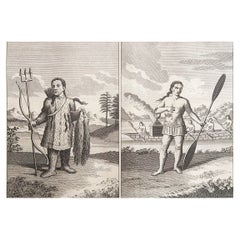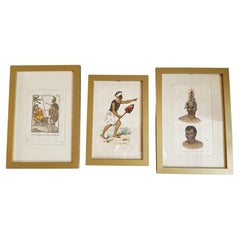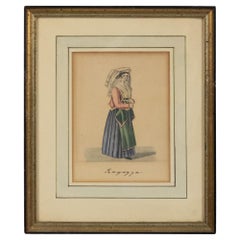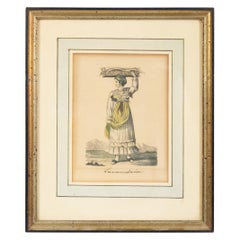Items Similar to Traditional Attire of the Ostiak: A Glimpse into 19th Century Siberian Culture
Want more images or videos?
Request additional images or videos from the seller
1 of 6
Traditional Attire of the Ostiak: A Glimpse into 19th Century Siberian Culture
$317.06per set
$396.33per set20% Off
£233.51per set
£291.89per set20% Off
€264per set
€330per set20% Off
CA$431.34per set
CA$539.17per set20% Off
A$479.31per set
A$599.14per set20% Off
CHF 251.16per set
CHF 313.95per set20% Off
MX$5,877.87per set
MX$7,347.34per set20% Off
NOK 3,203.44per set
NOK 4,004.30per set20% Off
SEK 3,013.68per set
SEK 3,767.10per set20% Off
DKK 2,009.79per set
DKK 2,512.24per set20% Off
Shipping
Retrieving quote...The 1stDibs Promise:
Authenticity Guarantee,
Money-Back Guarantee,
24-Hour Cancellation
About the Item
These original antique images are hand-colored and from the publication "Picturesque Representations of the Dress and Manners of the Russians," which includes sixty-four colored engravings with descriptions. The writer of this work is William Alexander, and it was published by John Murray in 1814. This work aimed to illustrate and describe the traditional dress and customs of various Russian peoples, including indigenous groups, at the beginning of the 19th century. It serves as an important historical record of cultural attire and practices of that era. The detailed colored engravings were a common method of such documentation in a time before photography, intended to provide the Western audience with a visual account of distant cultures.
The three engravings depict members of the Ostiak community, an indigenous group in Russia, dressed in traditional attire as per the early 19th century.
1. The first engraving shows an Ostiak man from the Obe region. He is wearing a fur-trimmed parka-like garment with geometric patterns and a hood, possibly indicating winter wear. His face is framed by the hood, and he stands with his arms outstretched, suggesting a welcoming posture or possibly displaying his attire.
2. The second image captures an Ostiak man in his winter hunting dress. This outfit is practical and vivid, featuring a bright red coat with fur trim around the cuffs and hood, which is worn over blue trousers. He is equipped with snowshoes and holds what appears to be a paddle or tool, indicating readiness for hunting or traveling across snowy terrains.
3. The third engraving represents a Female Ostiak, clothed in a long, brown dress with a light blue shawl or scarf draped around her shoulders and head. Her garment is simple yet elegant, with a buttoned bodice, suggesting everyday wear. Her hands are clasped in front of her, and she gazes directly at the viewer with a composed expression.
Each illustration is meticulously colored, which was typical of the time as a means to convey the richness and diversity of cultural attire. The illustrations provide a detailed look at the clothing, suggesting materials like fur and wool which would be necessary for the harsh climates where the Ostiaks lived. Such engravings were crucial for anthropological and cultural studies, offering insights into the lives of people far removed from the Western societies of the time. William Alexander's work, through these illustrations, contributes valuable information to the historical record, capturing the essence of the Ostiak people's traditional way of life.
The Ostiaks, historically referred to in this manner, are indigenous people living in Western Siberia. They are more commonly known today as the Khanty and the Mansi. The Khanty people traditionally inhabit areas along the Ob River and its tributaries in the Khanty-Mansi Autonomous Okrug, while the Mansi are found around the western Siberian region, in the area known as the Ural Mountains. Their territories are part of what is now known as the Khanty-Mansi Autonomous Okrug – Yugra, which is an autonomous okrug of Russia.
- Dimensions:Height: 9.45 in (24 cm)Width: 6.7 in (17 cm)Depth: 0 in (0.02 mm)
- Sold As:Set of 3
- Materials and Techniques:Paper,Engraved
- Period:
- Date of Manufacture:1814
- Condition:Very good, given age. General age-related soiling, toning and/or occasional minor defects from handling, adding to its patina. Please study scans carefully.
- Seller Location:Langweer, NL
- Reference Number:Seller: BG-13605-4-55 & BG-13605-4-56 & BG-13605-4-571stDibs: LU3054338703002
About the Seller
5.0
Recognized Seller
These prestigious sellers are industry leaders and represent the highest echelon for item quality and design.
Platinum Seller
Premium sellers with a 4.7+ rating and 24-hour response times
Established in 2009
1stDibs seller since 2017
2,494 sales on 1stDibs
Typical response time: 1 hour
- ShippingRetrieving quote...Shipping from: Langweer, Netherlands
- Return Policy
Authenticity Guarantee
In the unlikely event there’s an issue with an item’s authenticity, contact us within 1 year for a full refund. DetailsMoney-Back Guarantee
If your item is not as described, is damaged in transit, or does not arrive, contact us within 7 days for a full refund. Details24-Hour Cancellation
You have a 24-hour grace period in which to reconsider your purchase, with no questions asked.Vetted Professional Sellers
Our world-class sellers must adhere to strict standards for service and quality, maintaining the integrity of our listings.Price-Match Guarantee
If you find that a seller listed the same item for a lower price elsewhere, we’ll match it.Trusted Global Delivery
Our best-in-class carrier network provides specialized shipping options worldwide, including custom delivery.More From This Seller
View AllTraditional Attires of Early 19th Century Russia: A Visual Record in Engravings
Located in Langweer, NL
These original antique images are hand-colored and from the publication "Picturesque Representations of the Dress and Manners of the Russians," which includes sixty-four colored engr...
Category
Antique 1810s Prints
Materials
Paper
$317 Sale Price / set
20% Off
Free Shipping
Vestments of the Koriak: Cultural Heritage of Far Eastern Russia in 1814
Located in Langweer, NL
These original antique images are hand-colored and from the publication "Picturesque Representations of the Dress and Manners of the Russians," which includes sixty-four colored engr...
Category
Antique 1810s Prints
Materials
Paper
$317 Sale Price / set
20% Off
Free Shipping
Traditional Attires of Kamchatka: A Glimpse into the Cultural Wardrobe of 1814
Located in Langweer, NL
Source these engravings: The publication "Picturesque Representations of the Dress and Manners of the Russians," which includes sixty-four colored engravings with descriptions. The w...
Category
Antique 1810s Prints
Materials
Paper
$345 Sale Price / set
20% Off
Free Shipping
A Visual Journey through 19th-Century Russian Ethnic Attire, Engraved in 1814
Located in Langweer, NL
These original antique engravings represent a fascinating window into the past, specifically illustrating the traditional dress of Russian ethnic groups from the early 19th century. ...
Category
Antique 1810s Prints
Materials
Paper
$317 Sale Price / set
20% Off
Free Shipping
Ethnic Elegance: The Mordvin Attire of 19th-Century Russia Engraved, 1814
Located in Langweer, NL
The engravings offer a valuable glimpse into the traditional dress of the Mordvin people, an ethnic group from the region of Mordovia in Russia. The "Picturesque Representations of t...
Category
Antique 1810s Prints
Materials
Paper
$317 Sale Price / set
20% Off
Free Shipping
Ethnic Tapestry of 19th Century Russia: A Visual Anthology of Traditional Attire
Located in Langweer, NL
Source these engravings: The publication "Picturesque Representations of the Dress and Manners of the Russians," which includes sixty-four colored engravings with descriptions. The w...
Category
Antique 1810s English Prints
Materials
Paper
$345 Sale Price / set
20% Off
Free Shipping
You May Also Like
Original Antique Ethnographical Print of Indigenous Siberians. C.1780
Located in St Annes, Lancashire
Wonderful print of indigenous Siberians
Copper-plate engraving
Published C.1780
Unframed.
Category
Antique 1780s English Georgian Prints
Materials
Paper
Antique Ethnographic Tribal prints Set Art Décor Interior Design
Located in London, GB
Antique Ethnographic Tribal prints
A set of Three 19th century Hand coloured Lithographic prints featuring Tribal people from Papua new Guinea, Tonga and the Sandwich islands
Fr...
Category
Antique Late 19th Century French Prints
Materials
Wood, Paper
European Costume Print
Located in Queens, NY
European costume print in a gilt rectangular frame (Part of series of 6: GRS345-GRS350) PRICED EACH.
Category
20th Century American Mid-Century Modern Paintings
Materials
Rope
European Costume Print
Located in Queens, NY
European costume print in a gilt rectangular frame (Part of series of 6: GRS345-GRS350) priced each.
Category
20th Century American Mid-Century Modern Paintings
Materials
Rope
European Costume Print
Located in Queens, NY
European costume print in a gilt rectangular frame (Part of series of 6: GRS345-GRS350) priced each.
Category
20th Century American Mid-Century Modern Paintings
Materials
Rope
Pair Russian Portraits in 18th Century Garb
Located in New York, NY
Pair Russian portraits in 18th century garb. Fine French hand coloured engravings of a Russian male and female in traditional late 18th century richly coloured and styled clothing an...
Category
Late 18th Century Prints and Multiples
Materials
Paper
More Ways To Browse
Hunting Coat
Fur Trim Dress
Fur Pants
Colored Fur Coat
Snowshoe Furniture
Hunting Scarf
18th Century Imari Charger
19th Century French Cast Iron Bistro Table
19th Century French Faience Bowl
20th Century Famille Rose Bowl
5 Drawer Chest Walnut
50s Vintage Chest Of Drawers
50s Vintage Kitchen Cabinets
8 Immortals
African Wood Carved Statue
Alessandro Pianon Murano
Amber Glass Jars
Angler Fish
